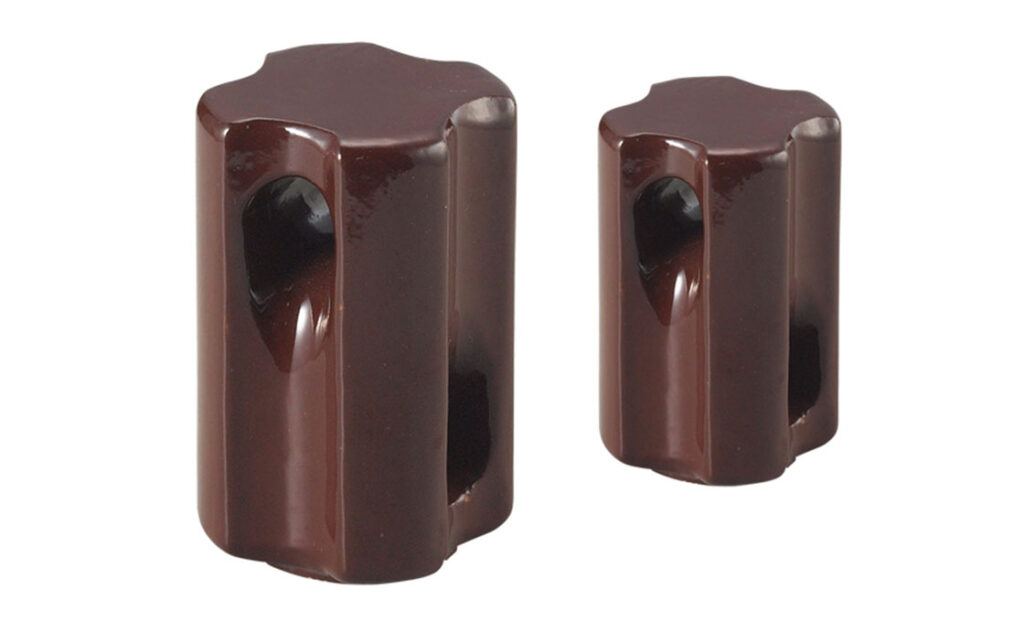
A stay insulator is a component used in electrical installations to provide support and insulation. It prevents the flow of electrical current between the conductor and the structure it attaches to. This helps to avoid unwanted electrical contact between the conductor and the support structure. Stay insulators also provide support and anchor to overhead conductors. Their design allows them to withstand high voltages and provide electrical insulation. This helps to maintain the integrity of the electrical system by preventing leakage currents. The insulators also help to distribute the tension along the conductor. This reduces stress concentrations and prevents structural failures. Stay insulators provide mechanical support by anchoring the cables to ADSS and OPGW cables. They also have vibration dampening features to mitigate the effects of wind-induced vibrations. Stay insulators ensures the safe and reliable operation in various environmental conditions.
Accessories used with stay insulator
Stay insulators used in electrical installations incorporate the use of various accessories. They help to ensure proper installation, support and functionality. The use of these accessories helps to maintain the integrity and safety of overhead power line systems. The following are the common accessories used with stay insulators for electrical installations.
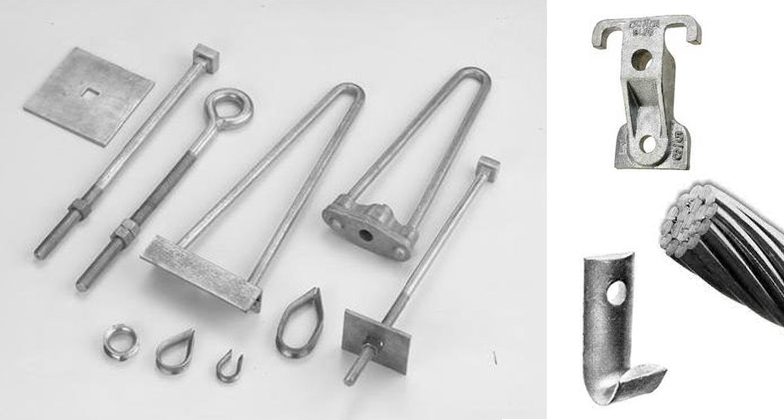
- Guy wire/stay wires– stay wires help to provide extra support and stability to the structure supporting the stay insulators.
- Thimbles – a thimble is a metal or plastic sleeves placed over the ends of the guy wires to prevent abrasion and wear. Thimbles help to prolong the lifespan of the guy wires and maintain their integrity under tension.
- Anchor rods – these help to anchor the guy wires to the ground or to other structures. This provides a strong foundation for the installation. The rods embed in concrete to suitable anchoring points.
- Vibration dampers – the dampers install on the guy wires or near stay insulators to reduce oscillations. They also absorb energy from wind-induced movements to maintain stability and reliability.
- Clamps and connectors – these help to attach the guy wires to the stay insulators and support structures.
- Dead-end grips – the grips work to stop the guy wires at the ends where they attach to the support structures. The grips provide a secure and reliable connection to allow for change and tensioning of the guy wires.
- Insulator strings – stay insulators connect in a string to provide increased electrical insulation and mechanical strength. insulator strings consist of individual units connected together with suitable hardware.
Purpose of a stay insulator in ADSS and OPGW cables
Stay insulators play an important role in ADSS and OPGW cables in various installations. ADSS and OPGW cables are self-supporting cables which means they need little support. Stay insulators provide mechanical support, electrical isolation and vibration damping. Additionally, they ensure the safe and reliable operation of electrical and communication systems. The following are the primary purposes of stay insulators in ADSS and OPGW cables.
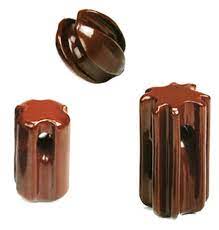
- Mechanical support – stay insulators provide support by anchoring the cables to the support structures. The insulators also help maintain the tension and alignment of the cables along their length.
- Prevention of galloping and aeolian vibration – this is a phenomenon that occurs in cables due to wind oscillations. The insulators help mitigate these effects by providing extra damping and stabilization to the cables.
- Weather and environmental protection – stay insulators are from materials like porcelain, glass or polymer. These materials are resistant to environmental factors such as moisture, chemicals and UV radiation. This helps to protect the cables and their components from corrosion and degradation.
- Electrical isolation – stay insulators offer electrical isolation between the cables and the support structures. This prevents electrical current from flowing between the cables and the structures.
- Optical fiber cable protection – OPGW cables contain optical fibers for communication purposes. Stay insulators help protect the optical fibers from mechanical stress and environmental hazards. This helps to prevent excessive bending that could damage the optical fibers.
Technical specifications for stay insulators
Manufacturers offer technical specifications for stay insulators to help with decision making. Technical specifications for stay insulators vary depending on the type of installation and requirements of the system. These specifications help engineers and designers to select the suitable stay insulators for projects. The following are the common technical specifications and considerations for stay insulators.
| Power Line voltage | Designation of Insulator |
| 415/240 V | A |
| 11000 V | C |
| 33000 V | C (two insulators to be used in series) |
- Material – stay insulators are from materials like porcelain, glass or composites. The selection of the material depends on various factors. This is including mechanical strength, electrical insulation properties and resistance to environmental conditions.
- Mechanical strength – the insulators should be able to withstand mechanical loads without failing. Their mechanical strength specifies in terms of tensile strength and compressive strength.
- Leakage current – the insulators should have low leakage current characteristics to reduce power losses. The leakage current specifies as the greatest allowable current under specified voltage and environmental conditions.
- Environmental resistance – stay insulators should be resistant to moisture, chemicals and UV radiation. They should have designs to withstand outdoor exposure without degradation.
- Voltage rating – the insulators have ratings for specific voltage levels to ensure proper insulation. The rating should be compatible with the operating voltage of the electrical system.
- Creepage distance – this is the shortest distance along the surface of the insulator between two conductive parts. It prevents flashovers and ensures enough electrical insulation.
- Corona performance – stay insulators should have designs to reduce corona discharge. This is by providing smooth and uniform surfaces.
- Dimensions and configurations – this includes length, diameter and shape for the specific installation requirements.
Industry advancements and updates for stay insulators
There are several developments and innovation in the stay insulator industry. These are mostly driven by research and need for improved performance. The advancements reflect the efforts within the industry to improve the performance, reliability and sustainability. Additionally, the advancements help to address the emerging challenges and evolving requirements. The following are the recent industry advancements and updates for stay insulators.
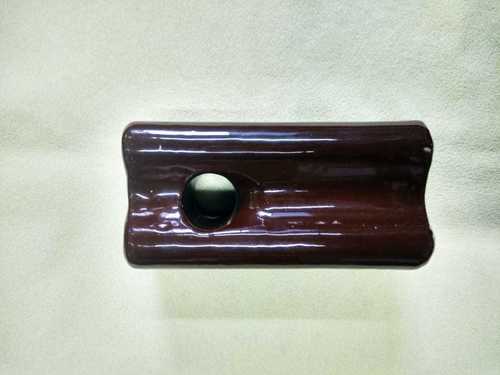
- Design optimization – there is continuous refining of the design for stay insulators to improve performance. This includes advanced modelling and simulation techniques. They improve the mechanical and electrical properties. Other design features include shedding profiles and hydrophobic surfaces.
- Integrated monitoring and diagnostics – this include incorporating monitoring and diagnostic capabilities. This allows for real-time condition assessment and remote monitoring of electrical and mechanical parameters. It also enables early detection of potential issues and proactive maintenance strategies.
- Anti-theft and anti-vandalism features – manufacturers continue to develop stay insulators with anti-theft features. They include tamper-resistant designs, special coatings or materials to deter theft.
- Material advancements – there are several advancements in the materials used for stay insulators. These include materials like silicone rubber and high-performance plastics. They are lightweight, have high mechanical strength and resistance to environmental factors.
- High voltage applications – there is a bigger demand for stay insulators capable of withstanding high voltages. The manufacturers continue to develop insulators with higher voltage ratings and electrical properties.
Supplier or vendor information for stay insulators
There are several manufacturers who specialize in producing stay insulators for electrical installations. The manufacturers should have expertise in designing and producing high-quality stay insulators. Some of the manufacturers include Siemens, TE connectivity, TTF Power Technology and Maclean Power Systems. Selecting the right supplier may impact the performance, reliability and cost effectiveness. The following are the common factors that influence the selection of the stay insulator suppliers.
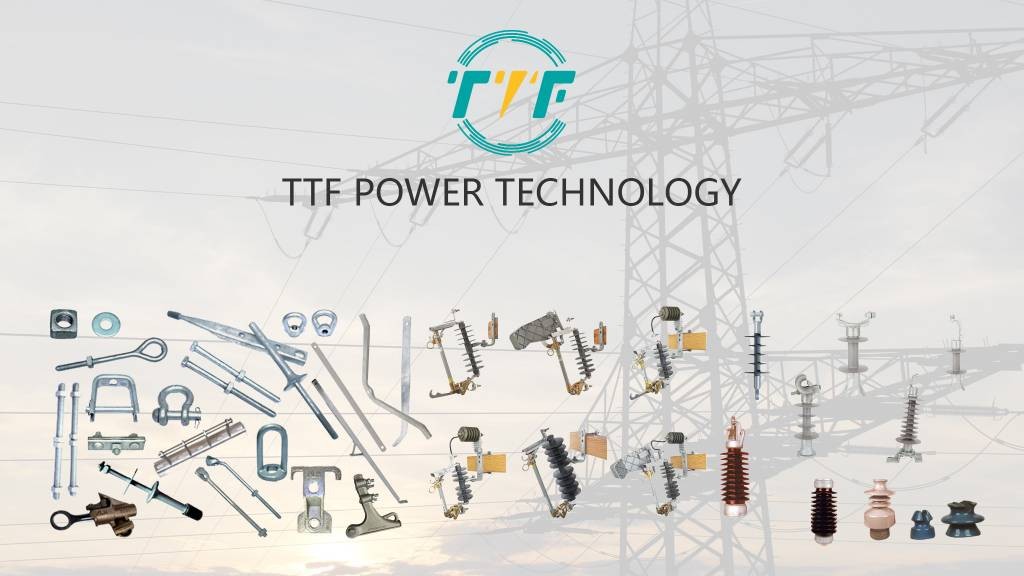
- Quality and reliability – look for suppliers with a reputation for producing high-quality insulators. Consider material quality, manufacturing processes and reliability testing procedures.
- Technical expertise and support – assess the supplier’s technical expertise and support capabilities. This is including their knowledge of insulator design and installation practices.
- Product range and customization – select a supplier that provides a wide range of stay insulators. This is to accommodate different voltage levels, environmental conditions and installation requirements.
- Cost and pricing – compare prices from different suppliers to ensure competitive pricing. Consider unit costs, volume discounts, shipping fees and payment terms.
- Manufacturing capacity – check their manufacturing capacity and production capabilities. This is to ensure they meet your project’s quantity and timeline requirements.
- After-sales support – select a supplier that provides responsive communication, timely support and effective problem-solving capabilities.
Frequently asked questions
ADSS is All dielectric Self-Supporting and OPGW is Optical ground Wire cables. Stay insulators support and anchor these cables to support structures. This is to provide mechanical stability and electrical isolation.
Recent advancements include use of advanced materials, design optimization, high voltage applications and anti-theft.
Stay insulators provide mechanical support and electrical insulation to overhead cables. They also ensure safety, reduce maintenance requirements and enables efficient transmission.